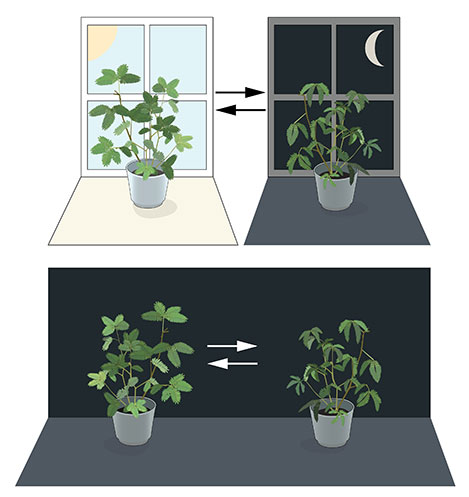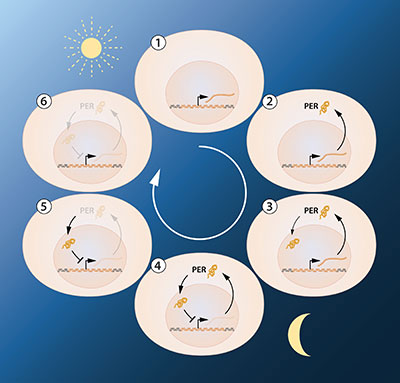(*) See more in: BM044E - Pollution and circadian rhythm, BM051E- Blue light again – and others in the site
As we have explained in several articles, our daily behavior is conducted by the Earth movement, responsible for the 24-hour cycle of the day and night. We stay awake during the day and get sleepy at night.
This behavior is largely due to the presence of the blue component of ambient light. For this reason, as we have also discussed in several articles, the excess presence of the blue component in artificial lighting can affect our behavior, for example, by making us feel sleepless at night.
A cell phone screen which has a strong blue component, used for long periods of time at night can take away our sleep, and even the illumination of a room, thus affecting our circadian rhythm.
This behavior is also observed in plants and many other living beings, resulting in what is called the "biological clock".

The cycle of day and night that is synchronized by light, however, remains for some time even in its absence, as shown in the illustration of the Nobel Prize website (https://www.nobelprize.org/nobel_prizes/medicine/ laureates / 2017 / press.html) which makes us believe that there is a "biological memory" which keeps the organism synchronized, even without an external reference.
What makes this synchronism, or clock, is precisely the gene that was discovered by the Nobel Prize-winning researchers.
They showed that there is a gene that controls the daily biological cycle, accumulating a protein at night and eliminating it during the day. This cycle occurs at a regular pace that is only synchronized by the light which is not essential for it to sustain.
The timing of this clock regulates critical functions of the body like the perception, hormone levels, sleep, body temperature and metabolism.
This would explain the "Jet lag" when we pass to different time zones on a trip, affecting our body and in some cases even causing diseases.
In the illustration below, from the Nobel Prize site itself, we have the way the organism adapts to the cycle of the day and night, through a feedback system.

Simplified illustration of the gene feedback regulation of the period. The figure shows the sequence of events during a 24-hour oscillation. When the period gene is active, the period mRNA is done. The mRNA is transported into the cytoplasm of the cell and serves as a model for the production of the PER protein. The PER protein accumulates in the cell core, where the period gene activity is blocked. This originates the mechanism of inhibitory feedback that underlies the circadian rhythm.
In this image we see how the circadian clock anticipates and adapts our physiology to the different phases of the day.



